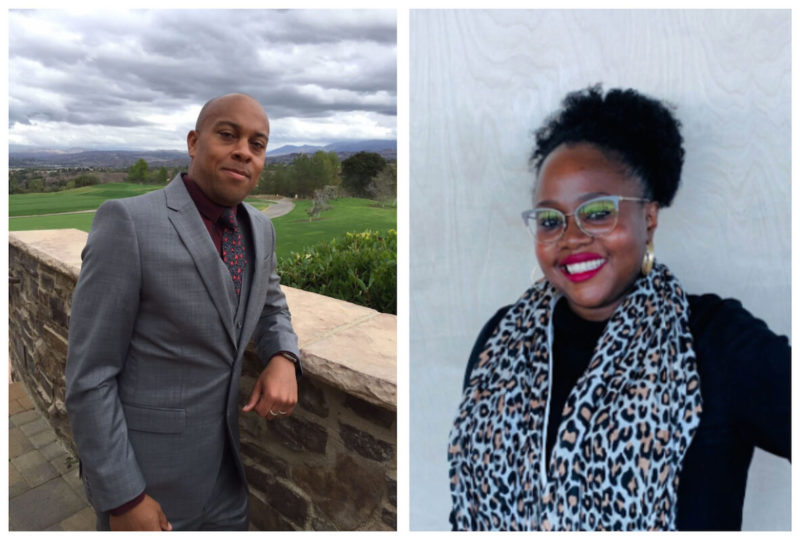Keys to diversity and inclusion in our industry include mentorship and promotion of Black search marketers
After an untraditional college path, Ramos graduated with a degree in creative writing and English and found a job as an SEO content writer. “I went into the interview and was just honest. I told them I can do the writing part, I need you guys to train me up on SEO.” And that is how his lifelong career in content and search began.
Today, Ramos is the Cofounder of Crunchy Links, a digital marketing agency focused on SEO, PPC, and content.
Analysis from Babson College shows that Black entrepreneurs start businesses at higher rates than other groups. “It may be that entrepreneurship represents really an opportunity to have independence in your work, have more control over your work and the possibility of earning more than you would earn in a job,” said Babson College professor Donna Kelley.
For Ramos, his journey to entrepreneurship started when the stress of agency life led him to want to create a culture of something better. Ramos and his business partner Jack Treseler put together what they called their Marketing Bible: “We would fill it with random thoughts, how we would run a company, things that we saw that we didn’t like at our agency that we would change if we became big in digital marketing.”

Director of Marketing at BehaVR Zenia Johnson first worked as a college financial aid officer until one of her students mentioned going for a Master of Integrated Marketing Communications. She quit her job of five years to pursue her master’s and an unpaid internship in marketing to determine if that was her path. “People said, ‘You’re crazy. You’ve been working for five years, and you’re gonna take an unpaid internship doing something you don’t even know if you want to do?’ and I’ve been here ever since,” she said.
Johnson’s path isn’t uncommon. The National Association of Colleges and Employers found that Black students are more likely to be in unpaid internships than their white peers–and that has a direct effect on diversity in the workforce. “Many organizations use their internship programs to feed full-time hiring; consequently, looking at how they source and select interns is critical for those that are committed to diversifying their workforces,” said Shawn VanDerziel, NACE executive director.
A failure of diversity
The success of Ramos and Johnson is statistically a rare story for Black marketers. Across the board, data shows how far marketing still needs to come in terms of diversity. The Association of National Advertisers (ANA) in a 2020 report found that only 6% of its total members and 3% of the members who are CMOs are Black.
Diversity is a problem that starts at the beginning of the career funnel, say both Ramos and Johnson. Not only is it harder for Black marketers to break into their career of choice, but they are less likely to be promoted. Mercer, a human resources consulting firm, released data last year that showed only 12% of support and operations staff are Black (versus 64% white), and that number continually decreases as Black employees are not promoted to higher levels within companies. The gap is even wider for Black women. A 2020 report from McKinsey and LeanIn.org found that for every 100 men who are promoted and hired to manager positions, only 58 black women [are] promoted and hired.
When Black marketers are hired, they’re also less likely to be promoted. In an article for Black Enterprise, Angela Colon-Mahoney wrote that, along with diversifying recruitment and referral sources, companies need to invest in promoting more people of color into middle management. This, she argues, is the key in helping organizations ensure diversity goes beyond just hiring entry-level employees (or giving them unpaid internships like in Johnson’s case) and becomes part of the company culture. ”Company leaders can invest in the future by having diverse middle management identify and mentor younger employees,” Colon-Mahoney said.
Ramos and Johnson both agree that mentorship is the key in drawing more Black marketers to search and keeping them there. “People look at it wrong where they’re trying to put the onus on the person who wants to be mentored to find a mentor, but it’s up to us who’ve been in any industry for a while to want to be mentors,” Ramos said. Johnson adds that mentorship doesn’t always have to be formal, either. ”Mentorship can be super helpful because having someone who is inviting you into rooms or spaces that you are not necessarily invited to, but who can be your advocate is huge.”
Mentorship is all about the relationship, and race may eventually become a topic–especially in the disparities that Black marketers feel that a potential white mentor may not. Ramon points out that white allies may not approach mentorship with Black marketers due to a fear of appearing like a “white savior.” “It’s a fear of saying or doing the wrong thing,” he said.
Johnson agrees that sometimes potential mentors overthink how race comes into play up front: “If someone approached me and was like, ‘hey, I’ve noticed like the work that you’re doing, you seem like you have a ton of potential, I would love to be your mentor.’ I wouldn’t take it as you are coming to me because I’m Black. Although eventually, maybe we’ll reach a point in our relationship where we’ll be able to talk about that,” she said.
While there are differences in how white and Black marketers have experienced the workplace, both Ramos and Johnson point out how critical it is to have diverse voices at all levels in marketing teams. A survey about diversity in advertising from Google and the Female Quotient found that 64% of those surveyed took action (including purchasing a product) after seeing an ad or marketing campaign they think is diverse and inclusive. The percentage increased dramatically within specific consumer groups “including Latinx+ (85%), Black (79%), Asian/Pacific Islander (79%), LGBTQ (85%), millennial (77%), and teen (76%) consumers.”
Reflect your customers
Johnson points out that, at the very basic level, our target audiences are diverse and varied and so our marketing teams should include those voices to reflect those experiences. “If your customers are different than you and they feel unrecognized, you will begin to lose them,” wrote Michael P. Krone in an essay for Title News. Having a more diverse workforce and leadership team not only brings in the perspectives of all your potential customers, but it helps drive growth.
In fact, companies with more diverse executives were 33% more likely to see above average profits, McKinsey data found, and one reason might be that they understand how to appeal to more than just one target audience. Johnson said this is critical in the search marketing space, too: “We should be looking at things from more than just one point of view in one perspective, because we’re selling products or services to more than one type of person.”
The onus of representation and inclusion should not fall solely to Black and non-white marketers. Everyone on the team should make it a priority. Johnson recommends asking whose perspective is missing: “Everybody needs to start thinking about this. If you look at a piece of creative or a marketing campaign, and you feel like everyone looks like you, then something is wrong.”
There’s also an element of ethics behind it, said Johnson. Marketing and advertising set trends and create demand and therefore have a responsibility to reflect the voices of their diverse target markets. “I feel like it’s like our responsibility as marketers. We’re putting these images out into the world, and children are going to see themselves reflected in these ads. And people are forming their identities, and they’re going to see themselves reflected in these ads.”
While most marketing companies have a long way to go with diversity and inclusion, Ramos and Johnson both recommend taking small steps to encourage diversity — making room for people different from you at the table, offering help where you can, giving up small things to give others opportunities.
Ramos says that what seem like small things to you can often incite big changes in another marketer’s life and improve the industry as a whole: “For example, if I’ve been speaking for a while, and every year I have fifteen speaking engagements lined up. If I go from fifteen to fourteen, it’s not going to change my life. But if a new SEO goes from zero to one, that could be a game changer. And people are so worried about what they could eventually lose and not think about what an individual and the industry as a whole, could gain if you just let go of that claw grip of one speaking engagement.”



